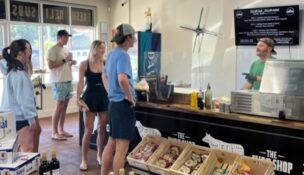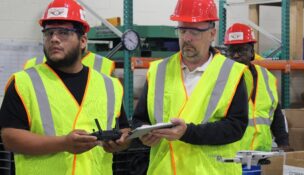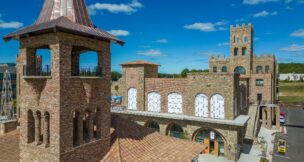Industrial market sees record absorption, retail record vacancy
Molly Hulsey //May 3, 2021//
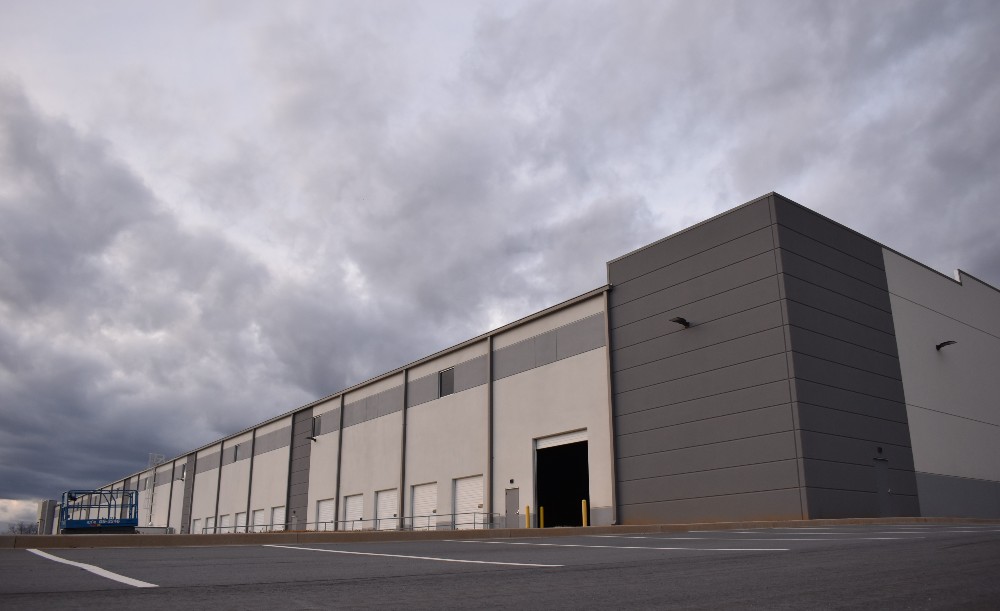 It’s no secret that demand for industrial real estate boomed during this first quarter.
It’s no secret that demand for industrial real estate boomed during this first quarter.
But with demand comes increased costs for construction materials, delaying deliveries further and raising construction prices even higher, according to a recent market report from Colliers International.
Compared to the first quarter of last year’s 1.14 million square feet supply in the Greenville-Spartanburg-Anderson industrial market, only 419,000 square feet have been built so far during 2021. More than 3.24 million square feet of it has been absorbed — at least 2 million more square feet than during the same period last year.
“Despite new construction deliveries and fluctuations in absorption over the past 13 quarters, the Greenville-Spartanburg vacancy rate remained historically low,” Crystal Baker, Colliers’ research coordinator, said in the report. Down year-over-year, the vacancy rate was 5.8%
About 3.7 million square feet is expected to hit the Greenville-Spartanburg market this year and 4.1 million in the next with at least two facilities of more than 1 million square feet slated for completion by Exeter and CRG on Spartanburg’s Pottery and Robinson roads. Baker expects the market’s absorption rate will slow over the next year as construction catches up to demand.
Logistics firms in particular have taken the lead, especially in jostling for position near an expanded port system. Even before the installation of the new Hugh K. Leatherman Terminal, Inland Port Greer reported its busiest month in history in March.
 “The Leatherman Terminal provides more big-ship capabilities, cargo capacity and efficient operations for S.C. Ports,” Liz Crumley, manager of corporate communications at the S.C. Ports System, told GSA Business Report in an email. “The additional capacity means more cargo can flow in and out of port terminals and inland ports. The efficient operations provide reliability and speed-to-market for customers needing to move imports and exports, as goods swiftly travel between Inland Port Greer and the Port of Charleston via overnight rail.”
“The Leatherman Terminal provides more big-ship capabilities, cargo capacity and efficient operations for S.C. Ports,” Liz Crumley, manager of corporate communications at the S.C. Ports System, told GSA Business Report in an email. “The additional capacity means more cargo can flow in and out of port terminals and inland ports. The efficient operations provide reliability and speed-to-market for customers needing to move imports and exports, as goods swiftly travel between Inland Port Greer and the Port of Charleston via overnight rail.”
Almost 94 million consumers can be reached by a one-day truck trip from the Inland Port, she added.
In January, judging from the industrial properties that had recently become available, Swayngim predicted a clamor for property.
“I guess the next thing in line is more absorption,” he said. “Most of these building are getting absorbed quickly. Very quickly.”
The story could not be more different for the retail market, however, as store owners continue to transfer to an online-only presence and COVID-19 consumer habits hold fast.
No new construction has been launched in the Greenville-Spartanburg retail market for the third quarter in a row. Vacancy has risen to the area’s highest rate since 2016 at 7.3%. Net absorption is in the red by a larger margin than ever seen in the market at negative 276,243 square feet, according to the latest market report from Avison Young.
Spartanburg’s market suffers from the highest vacancy rate at 11.8%, followed by Greenville at 6% and Anderson at 5.2%.
The report did note a potential uptick in the city of Mauldin as its leadership considers creating its own economic development corporation and construction on a new Aldi on North Main Street is expected to begin this summer — the first new retail construction project in months.
And property in the central business district in Greenville and Spartanburg is still hot — or at least not in the red in terms of absorption like its rural and suburban submarkets.
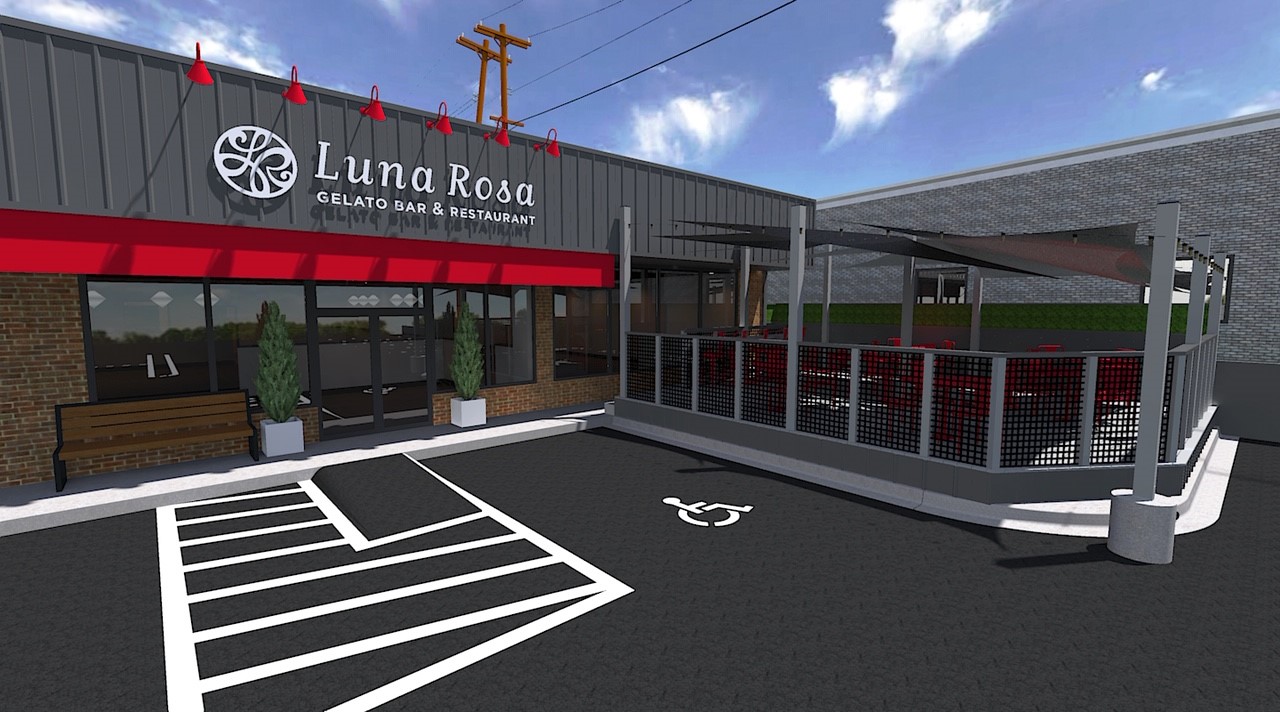 “We’ve seen some natural vacancies across the board,” CBRE’s Tommy Molin said earlier this spring. “It was predicted that 25% of restaurants in the United States would not make it. Greenville as a whole, when you look at our market, we have seen a few closures, but it’s also noted that a lot of those restaurant spaces have been actually backfilled quite quickly.”
“We’ve seen some natural vacancies across the board,” CBRE’s Tommy Molin said earlier this spring. “It was predicted that 25% of restaurants in the United States would not make it. Greenville as a whole, when you look at our market, we have seen a few closures, but it’s also noted that a lot of those restaurant spaces have been actually backfilled quite quickly.”
Molin noted that property in downtown Greenville continues to attract interest from new-to-market restaurants and microbreweries like Southernside Brewing Co. as patrons continue to filter back into the foodie scene.
And everyone who is on the hunt is searching for a compact footprint of 1,500 square feet or smaller. The days of sprawling venues are numbered — at least for now.
“What used to be 5,000 or 4,000-square-foot restaurants now are going small, 2,500 square feet, and this trend was started before due to our weather, where in Greenville you could sit outside,” he said. “Outdoor areas are key.”
He noted that downtown Greenville’s comparatively low rent prices compared to other cities in the Southeast continue to keep the market competitive despite a downturn in the retail market nationwide.
“I would say, overall, we have been very resilient from a retail perspective,” Molin said. “The city of Greenville and everybody has really worked together to do their best to weather the storm.”
This article first appeared in the May 3 print issue of GSA Business Report.
F





